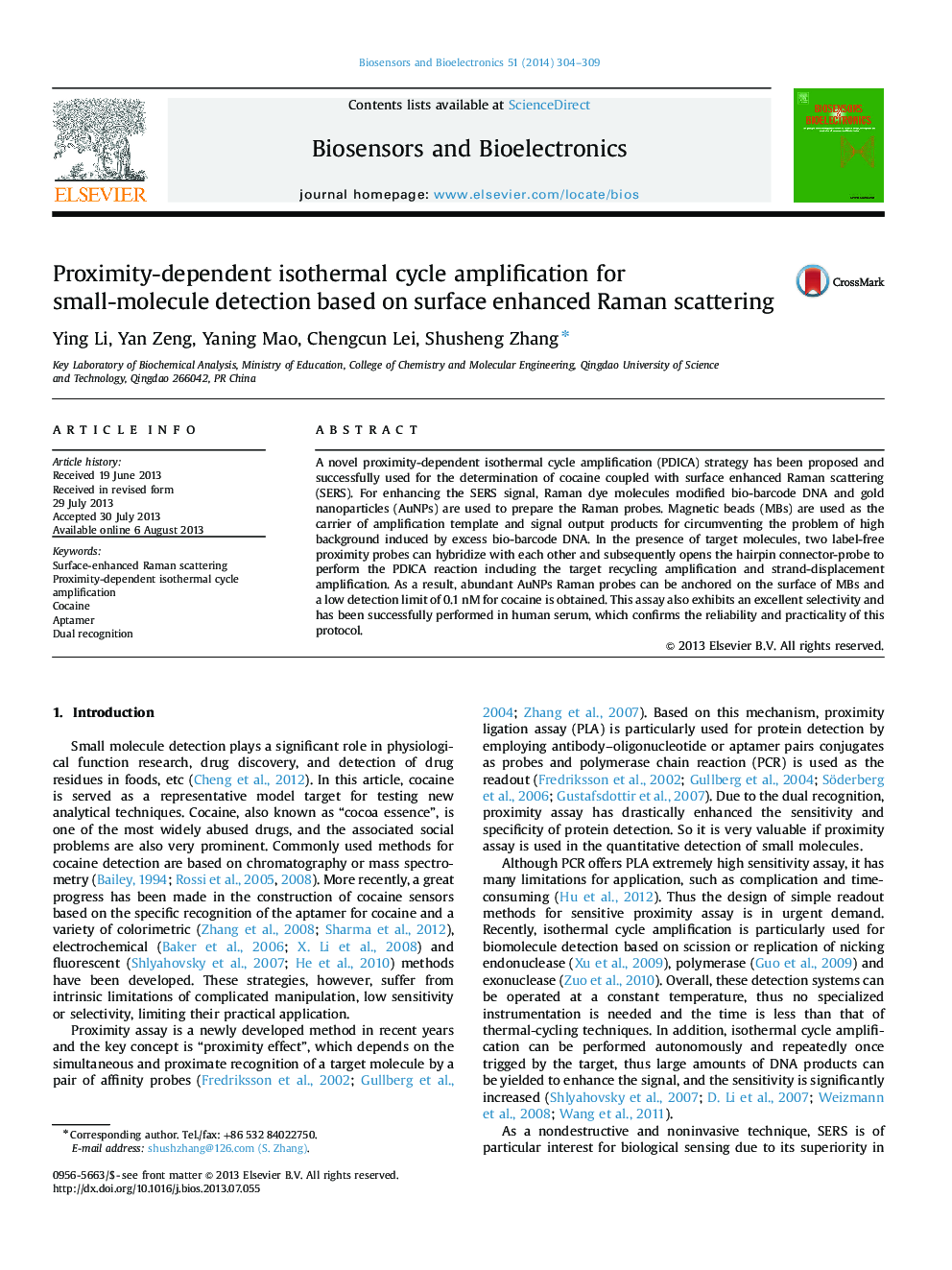| Article ID | Journal | Published Year | Pages | File Type |
|---|---|---|---|---|
| 866579 | Biosensors and Bioelectronics | 2014 | 6 Pages |
•A novel proximity-dependent isothermal cycle amplification (PDICA) method is developed.•The method is used for SERS detection of cocaine with high sensitivity and specificity.•The design can be served as a highly generalizable strategy for a wide range of biomolecules.
A novel proximity-dependent isothermal cycle amplification (PDICA) strategy has been proposed and successfully used for the determination of cocaine coupled with surface enhanced Raman scattering (SERS). For enhancing the SERS signal, Raman dye molecules modified bio-barcode DNA and gold nanoparticles (AuNPs) are used to prepare the Raman probes. Magnetic beads (MBs) are used as the carrier of amplification template and signal output products for circumventing the problem of high background induced by excess bio-barcode DNA. In the presence of target molecules, two label-free proximity probes can hybridize with each other and subsequently opens the hairpin connector-probe to perform the PDICA reaction including the target recycling amplification and strand-displacement amplification. As a result, abundant AuNPs Raman probes can be anchored on the surface of MBs and a low detection limit of 0.1 nM for cocaine is obtained. This assay also exhibits an excellent selectivity and has been successfully performed in human serum, which confirms the reliability and practicality of this protocol.
